England-Australia Flights
-
Fairbairn, George Patrick
Mr George Patrick Fairbairn 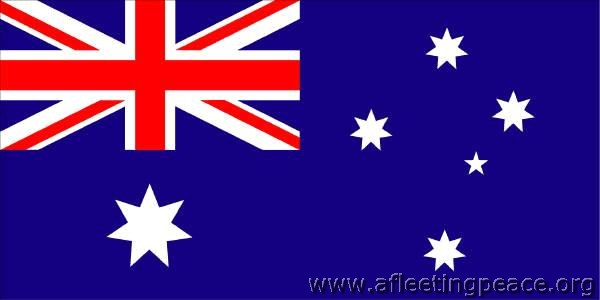 b. 1 Sep 1908, Skipton, Victoria, Australia
b. 1 Sep 1908, Skipton, Victoria, AustraliaHe made an attempt in 1931 to set a record for the flight to Australia:
"AIRMAN’S AMBITION. To Break Flight to Australia Record.
The Australian airman Mr. G. P. Fairbairn, who arrived at Lyons aerodrome yesterday evening in his light aeroplane, has had to postpone his departure this morning owing to unfavourable weather. As soon conditions improve, he will take off for Italy.
Mr Fairbairn made a short stop at Le Bourget yesterday before going on to Lyons. Mr. G. P. Fairbairn. who is a Cambridge graduate and the nephew of Mr. “Steve” Fairbairn, the famous rowing coach, learned to fly at the University. Last autumn, with a Cambridge friend named Shenstone, he left on a flight to Kenya, which had to be abandoned owing to mishaps in Italy and Egypt.
Mr. Fairbairn’s route on this occasion will be via Marseilles, Catania, Tunis, Benghazi, Cairo, Bagdad, Task, Karachi, Calcutta, Rangoon, Victoria Point, Singapore, and Batavia to Port Darwin." - Hartlepool Northern Daily Mail - Friday 20 February
However, it eventually took him nearly two months to get there:
"AUSTRALIAN FLIGHT Mr. Fairbairn Reaches Port Darwin PORT DARWIN.
. Mr. G. P. Fairbairn. the Australian airman who set out from Hanworth aerodrome, England. February 19 to beat Wing Commander Kingsford-Smith’s record under ten days for a light aeroplane flight between England and Australia, arrived here at. 3.27 this afternoon. The record is held by Mr. C. W, A. Scott, who overtook Mr. Fairbairn and completed the flight in 9 days, 4 hours. 11 minutes." - Portsmouth Evening News - Saturday 18 April 1931
'Flight' obviously lost interest:
"G. P. Fairbairn on a Spartan "Arrow" ("Gipsy II”). Left Hanworth February 19. Reached Nice February 20. Flight abandoned." Flight, October 30 1934
m. 1933 Mary Robertson [Murray] 1 daughter b. 1934
d. 26 May 1935
"PLANE NOSE DIVES INTO ROAD - Cambridge Pilot and Wife Killed
MELBOURNE, Sunday.
G. P. Fairbairn, former Cambridge man, and his wife, formerly Miss Mary Murray, Melbourne, were killed to-day when their ’plane crashed on a road near Essendon Aerodrome. The machine was the same as that in which Mr. Fairbairn flew from England to Australia in 1931 in company with Mr. K. Shenstone[sic].
Mrs. Fairbairn was in the pilot’s seat at the time of the tragedy. Apparently the engine stalled and the ’plane went into a spin, nose diving to the road. A motor-lorry passing at the time was grazed by one of the wings.
Mr. Fairbairn was one of the first Cambridge undergraduates to own his own ’plane and was a keen member of the University Squadron. While they were at the University together in 1930, Mr. Fairbairn and Mr. Kenneth Shenstone set out to fly to Kenya and back, but they crashed in landing at Heliopolis on the outward journey, and they abandoned the flight.
In the spring of 1931 they [sic] attempted to break Sir Charles Kingsford-Smith’s record of under ten days for a flight from England to Australia. They [sic] completed the journey, but took 57 days, and were overtaken on the way by Mr. C. W. A. Scott, who set up a record of 9 days 3 hours [sic]." - Belfast News-Letter - Monday 27 May 1935
Obviously there are conflicting reports as to whether George was accompanied on his Australia flight by Kenneth Shenstone!
see also Obituary - George Patrick Fairbairn - Obituaries Australia (anu.edu.au)
"THE FAIRBAIRN ESTATE
Melbourne, Sept. 23, 1935.
Estate valued at more than £91,639 was left by the late George Patrick Fairbairn, grazier, of Wooloomanta station, Lara, who, with his wife, was killed in an aeroplane crash earlier in the year. The late Mr. Fairbairn bequeathed Wooloomanta to the first of his sons who should attain the age of 25 years, but, as he had no son, the station is left to his nephew, George Michael Wheatley. The residue of the estate was left to his wife, but, as she was killed at the same time as her husband, it is now left to Fairbairn's infant daughter, Mary Frances Fairbairn, aged 21 months." -
Hinkler, Herbert John Louis
Sqn Ldr Herbert John Louis Hinkler 
photo: 1927, aged 35
Australian 'Lone Eagle', aviation pioneer, killed in a crash in Italy in 1933
-
Johnson, Amy
Amy Johnson (Amy Mollison)
Royal Aero Club Certificate 8662 (28 Jun 1929)
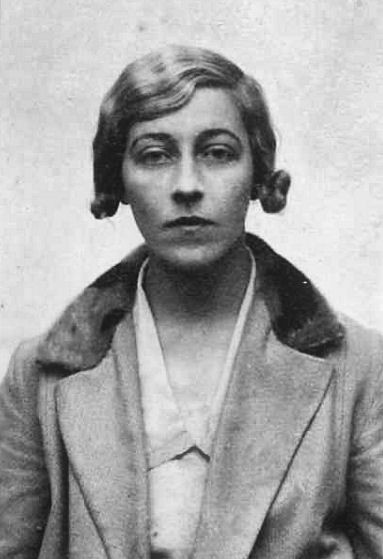 1929
1929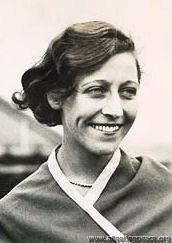
1934
Amy Johnson, Hull's Finest
a.k.a. Amy Mollison
Born 1st July 1903 in Kingston upon Hull; Amy was 'a slight young woman with heavily lidded eyes, dentured teeth, a shy smile and a soft Yorkshire accent' [she later developed a rather fake upper-class BBC one, possibly under her husband Jim's influence].
By 1929, a secretary (albeit one with an economics degree, and an engineer's licence to go with her aviator's certificate) turned solo record-breaking pilot and all-round nation's sweetheart. Married for six years to Jim Mollison (which was a Big Mistake).
On May 26th, 1932, after her solo flight from America, Amelia Earhart was the guest of the Royal Aero Club in London, and amongst the ladies in attendance were Lady Bailey, Amy, and Winifred Spooner (less than a year before her untimely death).
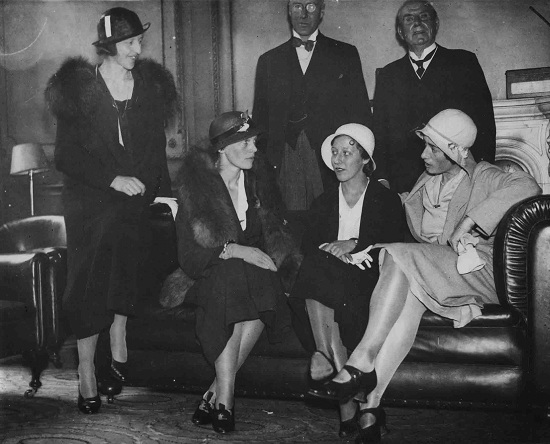
Air Transport Auxiliary in WWII (Died in Service)
Amy's aircraft included:
a 1928 DH.60G Gipsy Moth (G-AAAH) which she named 'Jason', and is now in the Science Museum;
a 1930 DH.80A Puss Moth, G-AAZV, 'Jason II';
a 1930 DH.60G Gipsy Moth, G-ABDV, er, 'Jason III'.
After 1930 she owned:
a 1932 DH.60G III Moth Major, G-ABVW,... ummm, let me guess... yes... 'Jason 4', and
a 1932 DH.80A Puss Moth, G-ACAB, 'The Desert Cloud'.
-
Kay, Cyril Eyton
Air Vice Marshal Cyril Eyton Kay CB, CBE, DFC, RNZAF 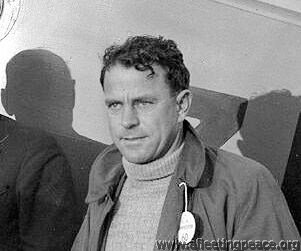
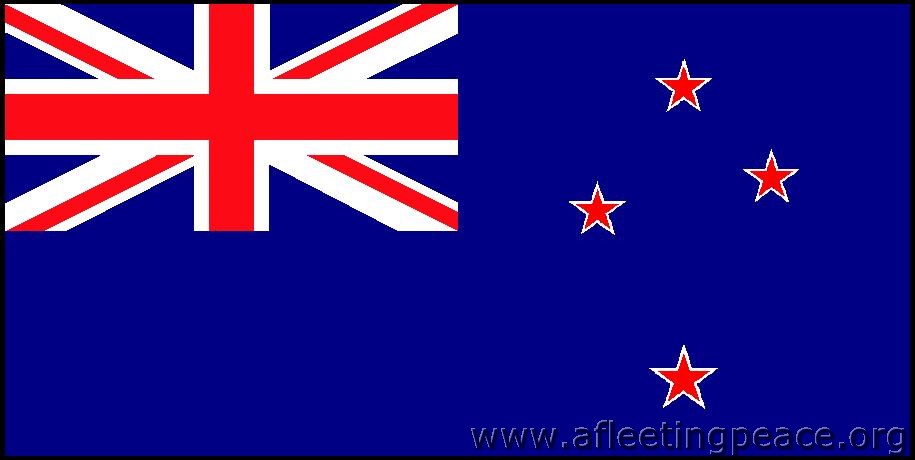 Born 25th June 1902 in Aukland, New Zealand
Born 25th June 1902 in Aukland, New ZealandDistinguished Flying Cross in June 1940:
"This officer was captain of an aircraft ordered to attack important targets in the forests south of Bourlers and Baileux during a night in June. In spite of extremely difficult conditions, and in the face of severe opposition, he successfully bombed the objective, starting several fires which gave accurate direction to other aircraft of this sortie. He then descended to a low altitude and, again in the face of heavy opposition, attacked the woods with all his machine guns. Sqn. Ldr. Kay has conducted a number of operations in recent weeks and has shown daring, determination and outstanding ability."
Cyril Eyton Kay, Hewett's co-pilot, is also his fellow citizen. He was born at Auckland on June 25, 1902. In 1925 he obtained a Short-Service commission (F/O.) in the R.A.F., and was sent from England to Egypt, where he promptly developed enteric and was invalided back after three months in hospital. Between 1926 and 1929 he was with No. 5 F.T.S. (Sealand), No. 2 Squadron (Manston), and, as navigation officer, with No. 26 at Catterick, after a course at Calshot.
In 1929, with F/O. Harold Piper, Kay obtained special leave and flew from London to Sydney in a Desoutter I monoplane. The flight was interrupted for three weeks by a forced landing on the island of Western Baronga, off Burma. Returning to England in 1930, Kay took an Instructor's course at the C.F.S. (Wittering), and was posted, until the end of 1931, as instructor to No. 2 F.T.S. (Digby). He then left the Service, but remained in England until the end of 1932 as demonstration pilot with a commercial company. In 1931 he visited the Wasserkuppe and achieved the distinction of being the first Britisher to secure the "C" gliding certificate. During the last two years he has continued civil flying in New Zealand. Both he and Hewett are married. Delivery of the "Dragon Six" now being built...
Kay, who has held a short-term commission with the Royal Air Force, flew from England to Australia with a brother Flying Officer, Piper, in a Desoutter, in 1930. He is one of the very few men in Australia who holds a second class Air Navigator's Certificate.
ABCs Guide, 1934
d. 29 Apr 1993 in London, aged 90
-
Matthews, F R
Capt F R Matthews ?? -
McIntosh, John Cowie
Lt John Cowie McIntosh 
Co-pilot with Ray Parer in the England-Australia Race 1919
Killed shortly afterwards, sadly:
"It is with the utmost regret we have to record the death, through an aeroplane accident in Australia, of Lieut J. McIntosh, who with Lieut. R. J. Parer, made that exceedingly plucky and sporting flight from England to Australia last year. It appears that Lieut. McIntosh, while making a cross-country flight, accompanied by his mechanic and a passenger, experienced engine trouble near Pithara (300 miles from Perth), and crashed after a nose-dive from about 2,000 ft. The mechanic also was killed, and the passenger injured."
Neil Follett kindly contacted me to clarify this, thus: "He was flying an Avro 504, which crashed on take-off from Pithara where he was conducting joy flights. I think 200 feet would be more appropriate than the 2000 feet mentioned. Pithara is about 200 kms (120 miles) from Perth, as the crow flies."
-
Miller, Jessie Maud
Jessie Maud Miller 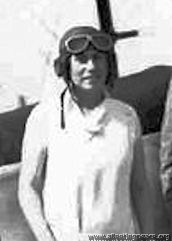 (not looking particularly chubby, imho) in 1927
(not looking particularly chubby, imho) in 1927'Chubbie' Miller (Mrs Keith Miller), the first woman to complete an England to Australia flight
d. 16 December 1972 in London
-
Mollison, James Allan
James Allan Mollison MBE 

with Amy and Sir Alan Cobham in 1932 or 33
 Born 19th April 1905 in Glasgow, and educated at Glasgow and Edinburgh Academies.
Born 19th April 1905 in Glasgow, and educated at Glasgow and Edinburgh Academies.RAF commission in 1923, transferred to reserve 1928, then a lifeguard and air-mail pilot in Australia. Made many record flights; his philosophy seems to have been "...one cannot be young for long, and it has always been my practice to live for the moment." He and Amy were married in July 1932, but They Said it wouldn't last, and it didn't; Jim had to fly Black Magic back by himself after the Race; Amy went on KLM.
Jim joined the Air Transport Authority (ATA) early in WWII, and carried on right through until 1946, ferrying more than 1,000 aircraft, comprising nearly every type used by the RAF - he was a 'Class V' pilot (authorised to fly any type of aircraft without previous instruction). He reckoned he had "on a conservative estimate, successfully delivered not less than 15 million pounds' worth of aircraft." - see https://www.ata-ferry-pilots.org/index.php/category-blog-1940/275-mollison-james-allanJim re-married and divorced twice, continued drinking [he once said that, when he was cold, tired and frightened, he recommended "brandy, lots of it"] and ended up as the owner of a hotel in Surbiton, bought for him by his third wife Mary [Kampuis], on the strict understanding that it would never be licensed to sell alcohol.
Died 30th October 1959 in Surbiton, London, aged 54, from alcoholic epilepsy.
 RAeC 1939
RAeC 1939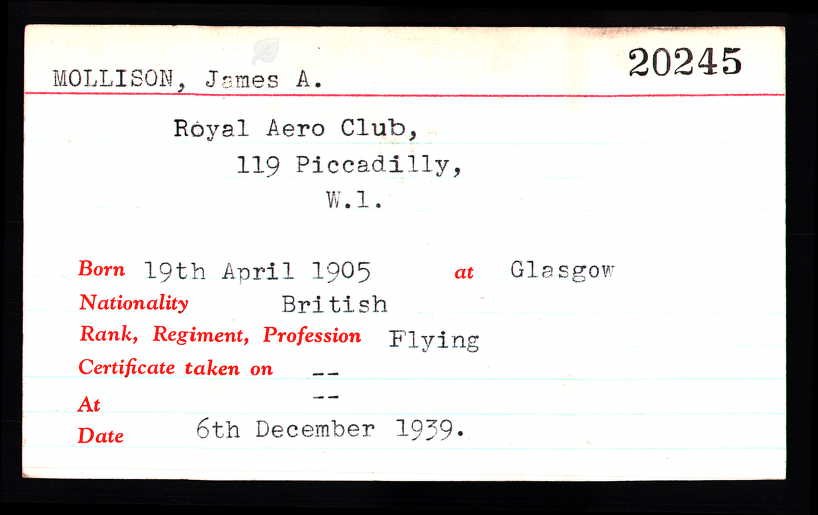 Educated: Glasgow and Edinburgh AcademiesCommissioned RAF 1923, transferred to reserve 1928, subsequently air-mail pilot in AustraliaRecord flights:Australia-England. July/Aug 1931. 8 days 19hrs 28minEngland-Cape (first flight by West coast Route) Mar 1932 - 4 days 17hrs 5minFirst solo Westward North Atlantic flight. August 1932First solo westward south Atlantic flight, and first flight England-South America, February 1933First flight England to USA (with Amy Johnson) July 1933England to India (with Amy Johnson) October 1934. 22 hoursNew York-Newfoundland-London (North Atlantic record crossing coast-to-coast 9 hours 20min) October 1936England-Cape by eastern route, November 1936. 3 days 6hrs.Joined ATA early in war. Released in 1946, after ferrying more than 1,000 aircraft, comprising nearly every type used by RAF - single, twin and multi-engined)Rank: Flight CaptainCategory as pilot: Class V (authorised to fly any type of aircraft without previous instruction)Ferried aircraft all parts of England, Scotland, North Ireland, France, Belgium, Holland.On conservative estimate successfully delivered not less than £15,000,000 of aircraft.For his war-time service in the ATA, Mr Mollison was awarded the M.B.E.
Educated: Glasgow and Edinburgh AcademiesCommissioned RAF 1923, transferred to reserve 1928, subsequently air-mail pilot in AustraliaRecord flights:Australia-England. July/Aug 1931. 8 days 19hrs 28minEngland-Cape (first flight by West coast Route) Mar 1932 - 4 days 17hrs 5minFirst solo Westward North Atlantic flight. August 1932First solo westward south Atlantic flight, and first flight England-South America, February 1933First flight England to USA (with Amy Johnson) July 1933England to India (with Amy Johnson) October 1934. 22 hoursNew York-Newfoundland-London (North Atlantic record crossing coast-to-coast 9 hours 20min) October 1936England-Cape by eastern route, November 1936. 3 days 6hrs.Joined ATA early in war. Released in 1946, after ferrying more than 1,000 aircraft, comprising nearly every type used by RAF - single, twin and multi-engined)Rank: Flight CaptainCategory as pilot: Class V (authorised to fly any type of aircraft without previous instruction)Ferried aircraft all parts of England, Scotland, North Ireland, France, Belgium, Holland.On conservative estimate successfully delivered not less than £15,000,000 of aircraft.For his war-time service in the ATA, Mr Mollison was awarded the M.B.E. -
Parer, Raymond John Paul
Raymond John Paul Parer
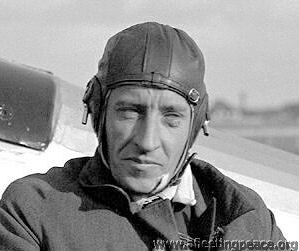
 b. 18 February 1894, in Melbourne, the second of seven sons.
b. 18 February 1894, in Melbourne, the second of seven sons.Joined the RFC during WWI, but a medical officer had insisted that Ray's heart 'was not strong' and he wasn't allowed to fly above 10,000 ft.
The only person to compete in the Air Races from England to Australia in both 1919 and 1934.
For the 1919 Race, he and John Cowie Macintosh persuaded Scottish millionaire distiller Peter Dawson to give them the money for an aeroplane, but only dared ask enough for an F.E.2b (although they would have preferred a DH.9). When Mr Dawson heard this, he scolded them and gave them another cheque. Battling their way through delays, innumerable forced landings and hair-raising exploits, they finally arrived nearly 8 months later, skint and with empty fuel tanks, only the second crew ever to make the journey.
In 1927, when the New Guinea Gold Rush began, he shipped a DH.4 there and set up the Bulolo Goldfields Aeroplane Service.
Tried to enlist in the RAAF in 1941, but was deemed too old and joined the Merchant Navy instead.
He was 'by nature shy and retiring' but clearly, never gave up - hence his nickname 'Battling'.
Spent the last 20 years of his life farming near Brisbane, and died there 5th July 1967, aged 73.
-
Pickthorn, Charles Edward Murray
Mr Charles Edward Murray Pickthorn 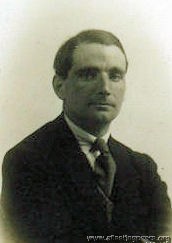 1928, aged 32
1928, aged 32a 'Dealer' from London; WWI ace (5 victories, one shared with James Robb).
Attempted an England-Australia flight in 1930 with F/O. C. J. Chabot on a D.H. "Puss Moth"; left Croydon October 6, but abandoned the flight in Karachi on October 13.
died 1938
-
Piper, Harold Lord
Mr Harold Lord 'Pip' Piper 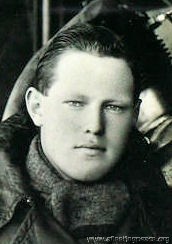
photo: 1918, aged 20
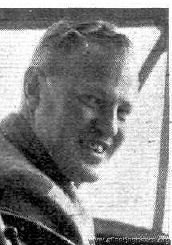
photo: 1937, aged 39
Originally from New Zealand, a farmer.
He and Cyril Kay flew a Desoutter from England to Australia in 1930; later chief test pilot for Shorts, until 1948.
"Apart from flying, Pip's other passions in life are duck shooting, guns and boats."
![Lankester Parker and Harold Piper [0122-0101]](/images/gallery/aviators/preview/333s333/Lankester%20Parker%20and%20Harold%20Piper%20%5B0122-0101%5D.jpg) (r), with Lankester Parker. © The Royal Aero Club
(r), with Lankester Parker. © The Royal Aero Clubd. 1965
-
Scott, Charles William Anderson
Mr Charles William Anderson Scott 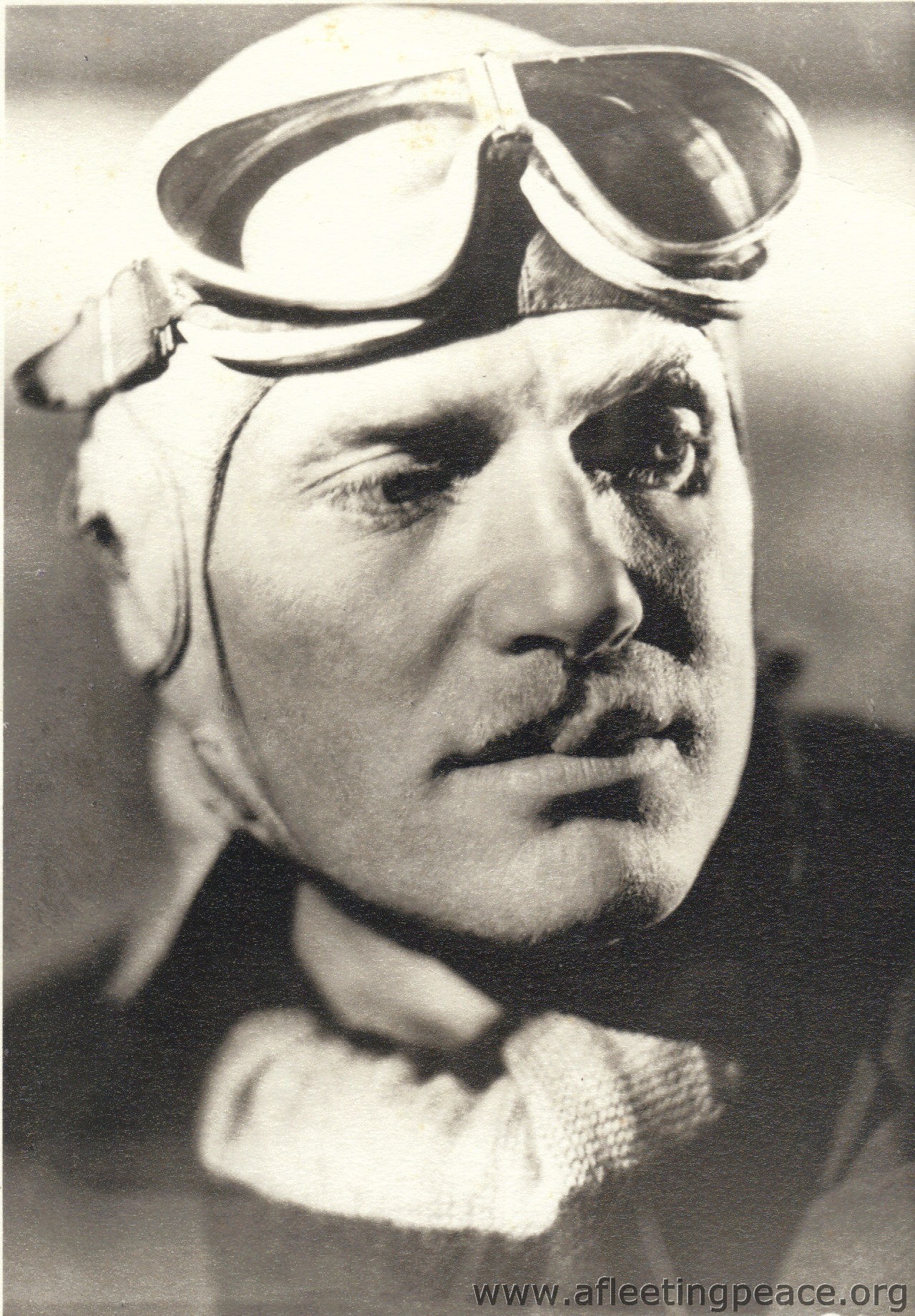
photo: 1934, aged 31
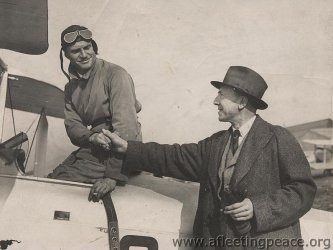 with his father Charles
with his father CharlesBorn 13thFebruary 1903 in London
One of the truly great aviators of the 1930s, establishing many long-distance records and winning some of the most important long-distance races of the period, but rather went to seed after that and shot himself after WWII. Scott wrote a book, and enterprisingly called it 'Scott's Book'.
"Scott is a splendidly-built six-footer, always in excellent condition. His other sporting recreations are golf and sailing."
"Charles Wiliam Anderson Scott, aviation editor of the 'News Chronicle', is the elder son of Mr Charles Kennedy Scott, the musician and conductor.
Educated at Westminster School, the future airman began his career as a sugar planter in Demerara, South America. The experience did not prove at all to his liking and he returned to England in 1922. Sailing was his passionate hobby - it still is - but as a youth trying to find his rightful career, flying did not occur to him until a friend suggested joining the Royal Air Force. Young Charles Scott sent in his application and thought little more about it until he found himself accepted and ordered to report to the Flying School at Duxford.
The Royal Air Force occupied the next four years of his life [he was heavyweight and light-heavyweight boxing champion whilst in the RAF] and in 1926 he was again wondering what was the next move when chance played the deciding game again. A sharp shower of rain sent him scurrying into Australia House for shelter with the result that he was bound for Australia not many weeks later.
There Scott became a pilot with Qantas Ltd., flying the mail routes in Western Queensland and acting as a flying instructor from 1927 to 1930. During that period he met the late Bert Hinkler, Mrs Mollison and the late Sir Charles Kingsford Smith and was inspired to break records.
Scott resigned his flying job in Queensland and came to England in 1931 determined to break the England-Australia record, despite accumulating financial troubles caused by the rising Australian rate of exchange.
He got there, reducing the record to 9 days 3 hours. That year he flew back again and made another record of 10 days 23 hours. Both flights beat Sir Charles Kingsford Smith's times.
In 1932 he attacked the England-Australia record for the second time and regained it with 8 days 20 hours.
The greatest adventure of his career was the magnificent flight in the Mildenhall-Melbourne air race of 1934 when he and the late Tom Campbell Black reached Melbourne in just under 3 days.

On September 17, Scott was married to Miss Greta Bremner, younger daughter of Mr and Mrs E L Bremner, of Melbourne, Victoria, Australia, only 12 days before the start of the Johannesburg air race."
- from the Celebration Dinner programme after the race (October 14th 1936 at Claridge's Hotel).
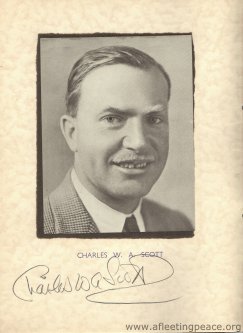
In 1936, his "Flying for All" Display embraced over 150 centres in the United Kingdom and Irish Free State, and was aimed particularly at "familiarising people with some of the cheap, easy-to-fly light aeroplanes available to-day".
Died 15th April 1946, in Germany, aged 43
.jpg)

p.s. The £10,000 MacRobertson first prize would, using average earnings, be worth about £2 million today.
-
Smith, Keith Macpherson
Lt Keith Macpherson Smith 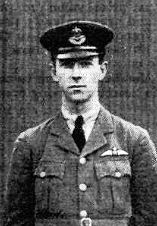
![Keith Smith [0738-0021]](/images/gallery/pioneering%20flights/preview/333s333/Keith%20Smith%20%5B0738-0021%5D.jpg)
© The Royal Aero Club [0738-0021]
Keith Macpherson Smith - Wikipedia -
Smith, Ross Macpherson
Capt Ross Macpherson Smith 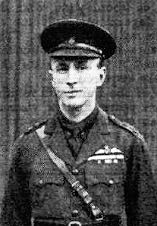
Ross Macpherson Smith - Wikipedia -
Waller, Kenneth Herbert Fraser
Mr Kenneth Herbert Fraser 'Ken' Waller 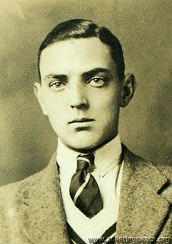 1930, aged 22
1930, aged 22
b. 7 April 1908, in Lambeth, London
As you can see, he was over 6ft 4in in height. Despite this, learnt to fly in Kent, got his aviator's certificate in 1930 and then became an instructor at Brooklands in Surrey.
Pilot, with Owen Cathcart Jones, of one of the D.H. Comets for the MacRobertson Race in 1934; given third prize (erroneously, in my view, but it's probably a bit late to say that now).
In 1935, got annoyed with Owen Cathcart Jones for something he said in his book that Ken felt "reflected on his courage and ability as a pilot", and even went to court over it. Owen replied that "that was the last thing he intended, as Mr. Waller and he had been, and still were, very good friends", which seemed to settle the matter.
He and Max Findlay competed in the Schlesinger Race to South Africa in 1936, in an Airspeed Envoy (No 13), but this crashed on take-off in Northern Rhodesia, killing Findlay and the radio operator; Ken was thrown out through a hole in the fuselage and badly hurt.
After WWII, became Miles Aircraft's chief test pilot (he delivered a Hillman Minx car to Orkney in 1948 at a cost of £35, you may remember).
Page 3 of 3

